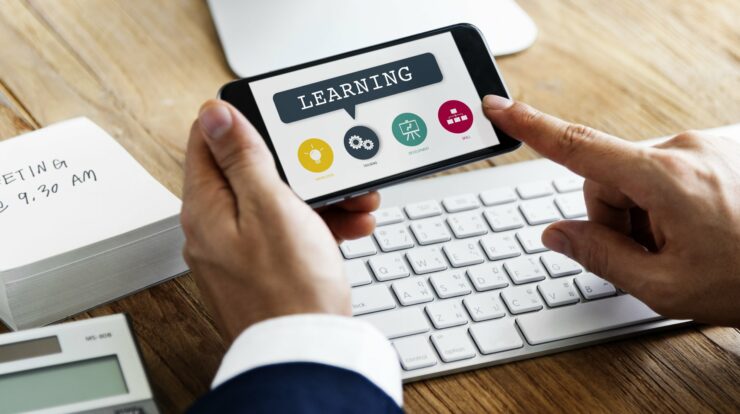
“On-the-job training,” “continued professional development,” and “corporate training” are interchangeably used to define the age-old practice of organizations to help employees to hone and grow their skills. Training and development help organizations retain top performers, boost employee morale, enhance productivity, and earn higher profits.
Technological advancement and an abrupt rise in global competitiveness in the past decade have revolutionized the way organizations train their employees. Employees today are expected to absorb humongous information in a limited time, reducing their attention spans significantly.
A subset of mLearning, microlearning on mobile devices is the latest concept for imparting new knowledge to employees that takes into account all of the above-mentioned challenges.
Memory
In simple terms, memory is the process by which one acquires, retains, and retrieves information. The brain uses shapes and patterns to create a specific memory. These patterns are generally stored in short-term memory regions. They can be transferred to long-term memory regions using reintroduction and recall. Memory retention can also be enhanced with the presence of an emotional link with the primary stimulus.
Forgetting Curve and Retention
Hermann Ebbinghaus, a psychologist, hypothesized that if no attempt is made to retain information, it gets lost over time. He observed that the participants tend to forget a large portion of newly gained information within hours or days, assuming they did not endure any sudden emotional or physical trauma. This phenomenon was termed the “forgetting curve.”
The reintroduction of lessons in the form of bite-sized modules helped the participants for retaining knowledge over an extended period.
Microlearning and Mlearning
Microlearning consists of focused learning units and may be made available on multiple devices. The short bursts of information are presented using interactive and engaging multimedia. Microlearning is an effective way to break down large and complex training material into manageable pieces. It follows a learner-centric approach to provide just-in-time training on various devices.
Equipping learners with relevant training materials on their mobile devices empowers them to learn at their own pace and at any location. They can pause their learning and resume their activities. They can also move back and forth between lessons to rehearse the completed module, thereby helping them to improve their retention percentage.
This repetition technique can transfer the newly learned lessons to long-term memory efficiently and effectively.
Here are some tips for using microlearning on mobile applications to increase knowledge retention.
Tips to Use Microlearning on Mobile Applications to Increase Knowledge Retention
-
Video Demos
The learners are more likely to remember the lessons presented in a video than in static text. Therefore, digital learning solutions incorporate video content as it improves learner engagement and interest. The visuals and sound effects suit the brain’s capacity to process and interpret data. They also facilitate memory boost.
mLearning apps can support small videos and GIFs, which can successfully refresh the memory when needed. The learners can also review the video content any number of times.
-
Pop Quizzes
Quizzes are a great way to help the learners assess their knowledge, stay engaged in the course, and build confidence. Mobile applications for microlearning may incorporate a specified section of pop quizzes for self-assessment and to reinforce comprehension. It could also be spread across the mLearning course. Many developers include a quiz at the start of a training module to assess prior knowledge and understanding of the learners and one at the end of the module to help them revise the newly learned concepts.
-
Use of Multimedia
Extensive use of catchy phrases and graphically rich content in the training materials is an effective tool to maximize knowledge retention among the learners. As the brain comprehends shapes and patterns, each infographic used in the training material can act as a cognitive bookmark for the learners. These micro-elements can take the learners back to the relevant section of the course and remind them of the related concepts and lessons.
Furthermore, graphics play a significant role in condensing running text into a single visual. The visual content can easily be uploaded to mobile learning applications and made available to all learners.
-
Audio Modules
mLearning modules can also include digital audio clips that the learners can access on the go and refresh their concepts instantly. There may arise situations where the learners are unable to view the training content actively. For example, when they are driving or are engaged in another activity. In such scenarios, audio modules become a convenient alternative to impart required training.
Audio modules allow the knowledge to seep in passively. They can also be used to “talk the learners through” a task – a classic example of implementing the learning immediately.
-
Simulations for Mobile
Simulations provide the learners with a safe space to practice their newly acquired knowledge in real-life scenarios. Bite-sized and personalized simulations on mobile applications can help the learners to memorize the necessary steps to perform a task and hone the required skills.
The simulation can be broken down stage-wise into smaller tasks so that the learners have the option of retrieving the necessary information on and off the field.
-
Compliance Games
Incorporating compliance games in a microlearning course on mobile applications is the latest, most exciting, and most engaging method to enhance the employee’s learning experience. The training modules are presented as game levels. To proceed ahead in the game, the learner is required to complete the previous level. Developers have also introduced features such as penalties and rewards in the gaming modules to maintain the interests of learners in the microlearning course.
Such experiences also enable the learners to remember the training materials over an extended period in a fun and immersive manner.
Conclusion
Microlearning is a tool that can be made available on multiple devices and consists of bite-sized training modules. It can be used effectively to increase knowledge retention among learners. Learners have the privilege to choose a convenient time and place to complete their mlearning course. They are also free to review the training course to clearly understand, comprehend and retain the newly learned knowledge. Microlearning is a memory primer that helps learners recollect the right information at the right time.


